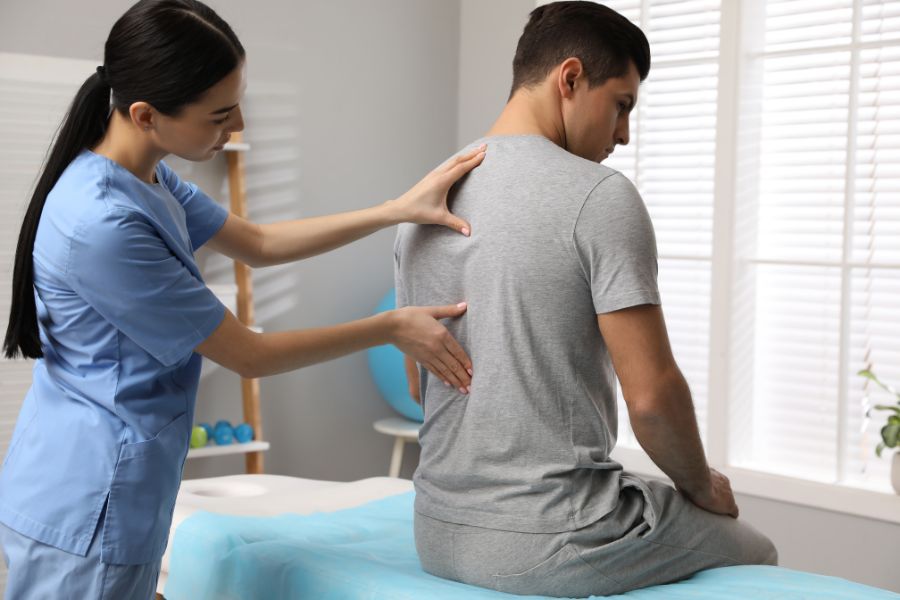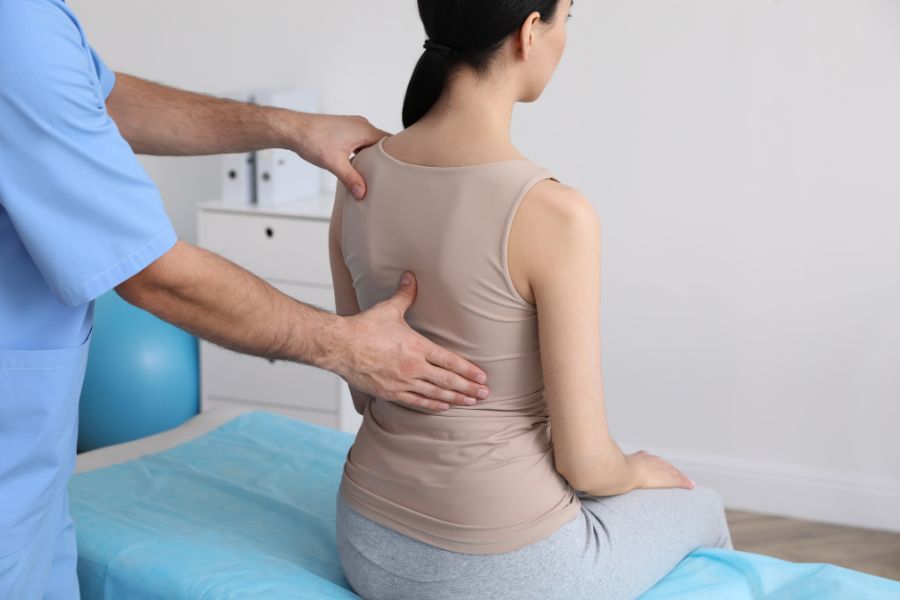Have you ever wondered if that persistent back discomfort or uneven posture could be more than just bad habits? Scoliosis—a sideways curvature of the spine—can sneak up on you, especially in its early stages. But knowing the signs can make all the difference.
From visual clues to physical symptoms, understanding how to know if you have scoliosis at home can be a powerful first step toward managing your spine health. If you’ve ever questioned your posture in the mirror or noticed odd asymmetries in your body, this guide is for you.

Can You Have Scoliosis and Not Know It?
Yes, it’s entirely possible to have scoliosis without knowing it, particularly in its mild stages or when it develops in adulthood. Adult-onset scoliosis or milder spinal curves can go unnoticed because they often don’t cause immediate pain or functional limitations. In fact, many people live with scoliosis for years without ever realizing it. Scoliosis can develop gradually, and even substantial curves may not require treatment unless they lead to symptoms. That’s why understanding the signs is critical—so you can catch scoliosis before it progresses.
Visual Symptoms of Scoliosis
Many of the early signs of scoliosis can be seen rather than felt, making visual inspection a useful first step in recognizing the condition, especially at home. These visual clues often appear subtly and may go unnoticed until they become more pronounced. Below are some of the most common physical signs to look out for.
Uneven shoulders or hips
One of the most common visual signs of scoliosis is asymmetry in the shoulders or hips. You might notice one shoulder sitting higher than the other or one hip jutting out more prominently. This imbalance occurs because the spine’s curve causes the torso to shift, pulling muscles and bones out of alignment.
Curved spine
A visible curve in the spine—often resembling an “S” or “C” shape—is a classic sign of scoliosis. This curvature can sometimes be seen when standing upright or bending forward. In mild cases, it may be barely noticeable without close inspection, but more pronounced curves can create a noticeable misalignment of the upper body.
Uneven waistline
Scoliosis can cause the waist to appear uneven, with one side looking higher or more curved than the other. This occurs as the spine’s curvature shifts the alignment of the pelvis and lower back muscles. You might notice the waistband of your pants sitting lopsided or gaps on one side when wearing fitted clothing.
Prominent shoulder blades
In scoliosis, one shoulder blade may stick out more than the other, especially when bending forward. This occurs as the spine twists, causing the ribcage and muscles to shift unevenly. It’s often more noticeable during a forward bend test, where the spine’s curvature becomes easier to detect.
Prominent ribcage
A noticeable rib hump or bulge on one side of the back or chest can occur when scoliosis causes the spine to rotate. This rotation shifts the ribcage out of place, creating asymmetry that is especially apparent when bending forward. The prominence may be subtle at first but can become more pronounced as the curve progresses.
One leg appears shorter
Although scoliosis doesn’t physically shorten a leg, spinal curvature can tilt the pelvis, making one leg appear shorter than the other. This can lead to uneven weight distribution and a noticeable limp or imbalance while walking. It may also cause shoes to wear unevenly or pant legs to seem mismatched in length.
Patients Testimonials
Other Signs of Scoliosis Getting Worse
As scoliosis progresses, symptoms can go beyond visual asymmetries and start to interfere with daily life. These signs often develop gradually and may be dismissed as general aging or lifestyle-related discomfort. Recognizing them early can help prevent long-term complications and guide appropriate treatment.
Chronic back pain
Persistent back and neck pain is one of the most common symptoms that scoliosis is getting worse, particularly in adults. As the spine curves, it places uneven stress on muscles, joints, and discs, leading to muscle fatigue and inflammation. Over time, this discomfort can become chronic, affecting mobility and quality of life if left untreated.
Fatigue
Fatigue associated with scoliosis is often caused by a combination of muscle strain and nerve compression. As the spine curves, certain muscles are overworked to keep the body upright, while compressed nerves can interfere with efficient movement. This double strain can leave patients feeling tired or weak, even after modest physical activity.
Numbness or weakness
In more severe cases of scoliosis, the spinal curvature can press against nearby nerves, disrupting normal nerve function. This compression may result in numbness, tingling, or muscle weakness in the arms or legs. These symptoms should not be ignored, as they may indicate that scoliosis is affecting spinal nerve pathways and requires prompt evaluation.
Difficulty breathing
In severe cases, scoliosis can affect more than just posture—it can interfere with lung function. A pronounced spinal curve can reduce the space within the chest cavity, making it harder for the lungs to fully expand. This restriction may lead to shortness of breath, especially during physical activity or while lying down.
Causes of Scoliosis
Understanding the root cause of scoliosis can help clarify treatment options and expectations. While the condition may seem to appear out of nowhere, it can actually stem from several different factors—some congenital, others acquired over time. Here are the most common causes:
- Idiopathic scoliosis: This is the most common form and has no identifiable cause. It usually develops in adolescence and is thought to be influenced by genetic and developmental factors.
- Congenital scoliosis: Present at birth, this type results from abnormal spinal development in the womb. It may involve misshapen vertebrae or partial spinal fusion.
- Neuromuscular scoliosis: Often associated with conditions like cerebral palsy or muscular dystrophy, this form arises when muscle imbalances or neurological disorders affect spinal stability.
- Degenerative scoliosis: Typically occurring in adults, this type is caused by age-related wear and tear on the spine, such as disc degeneration or arthritis.
- Traumatic scoliosis: Injury to the spine, like fractures or surgical complications, can lead to a curvature that progresses over time.
- Syndromic scoliosis: Found in patients with syndromes like Marfan or Ehlers-Danlos, this form is part of a broader genetic disorder affecting connective tissue.


Best Neurosurgeon in Orange County
Dr. Taghva specializes in the treatment of neck pain, low back pain, sciatica, brain tumors, Parkinson’s disease, as well as other conditions requiring brain or spine surgery.

Scoliosis Treatment Options
Once scoliosis is diagnosed, treatment depends on the severity of the curve, the patient’s age, and the presence of symptoms. While mild cases may only require observation, more pronounced or progressive curves often benefit from active intervention. Below are some of the most common treatment approaches available for managing scoliosis.
Bracing
Bracing is often recommended for children and adolescents whose scoliosis is still progressing but not yet severe enough to require surgery. The goal of back braces is to prevent further curvature by supporting the spine as it grows. Modern braces are more comfortable and less restrictive than older models, allowing for better compliance and more effective outcomes.
Physical therapy
Physical therapy plays a key role in managing scoliosis by strengthening core muscles, improving posture, and increasing flexibility. A customized exercise program can help reduce discomfort, slow curve progression, and enhance mobility. It’s especially useful for patients with mild to moderate scoliosis or those recovering from surgical treatment.
Spinal fusion surgery (scoliosis surgery)
Spine surgery is typically recommended for severe or rapidly worsening scoliosis that doesn’t respond to noninvasive treatments. The procedure involves joining two or more vertebrae together using bone grafts, rods, and screws to correct the curve and stabilize the spine. It can significantly reduce pain and prevent further curvature, improving both posture and quality of life.
Get Your Scoliosis Diagnosis and Treatment from an Expert Neurosurgeon
Choosing an experienced neurosurgeon for scoliosis diagnosis and treatment can make a significant difference in outcomes, especially when symptoms are subtle or the condition has progressed. A skilled specialist will not only recognize the nuanced signs of scoliosis but also guide you through the most effective, minimally invasive options available.
Dr. Alexander Taghva, a board-certified neurosurgeon based in Orange County, is a leader in spine health. Trained at Johns Hopkins and USC, and a pioneer in advanced neurosurgical techniques, Dr. Taghva offers patients state-of-the-art care in both nonsurgical and surgical scoliosis management. Call us at 949-388-7190 or visit our contact page to schedule your consultation today.

